Examining Globalisation's Economic, Cultural, Ethical Impacts on ASDA
VerifiedAdded on 2021/01/12
|26
|4976
|33
Project
AI Summary
This project report examines the impact of globalisation on the retail giant ASDA. It begins by defining globalisation and its effects on various business functions, including marketing. The project outlines aims, objectives, and research questions, focusing on the economic, cultural, and ethical impacts. Task 1 includes devising project aims and objectives, followed by a project management plan detailing costs, scope, time, quality, communication, risk, and resources. A work breakdown structure and Gantt chart are also presented. Task 2 involves small-scale research using both qualitative and quantitative methods, with explanations of primary and secondary data collection. Task 3 focuses on analyzing research and data, and communicating appropriate recommendations. Task 4 evaluates the value of the research in meeting the stated objectives. The project utilizes a case study approach to provide insights into ASDA's operations within a globalized context, providing a structured approach to project management, research, and data analysis.
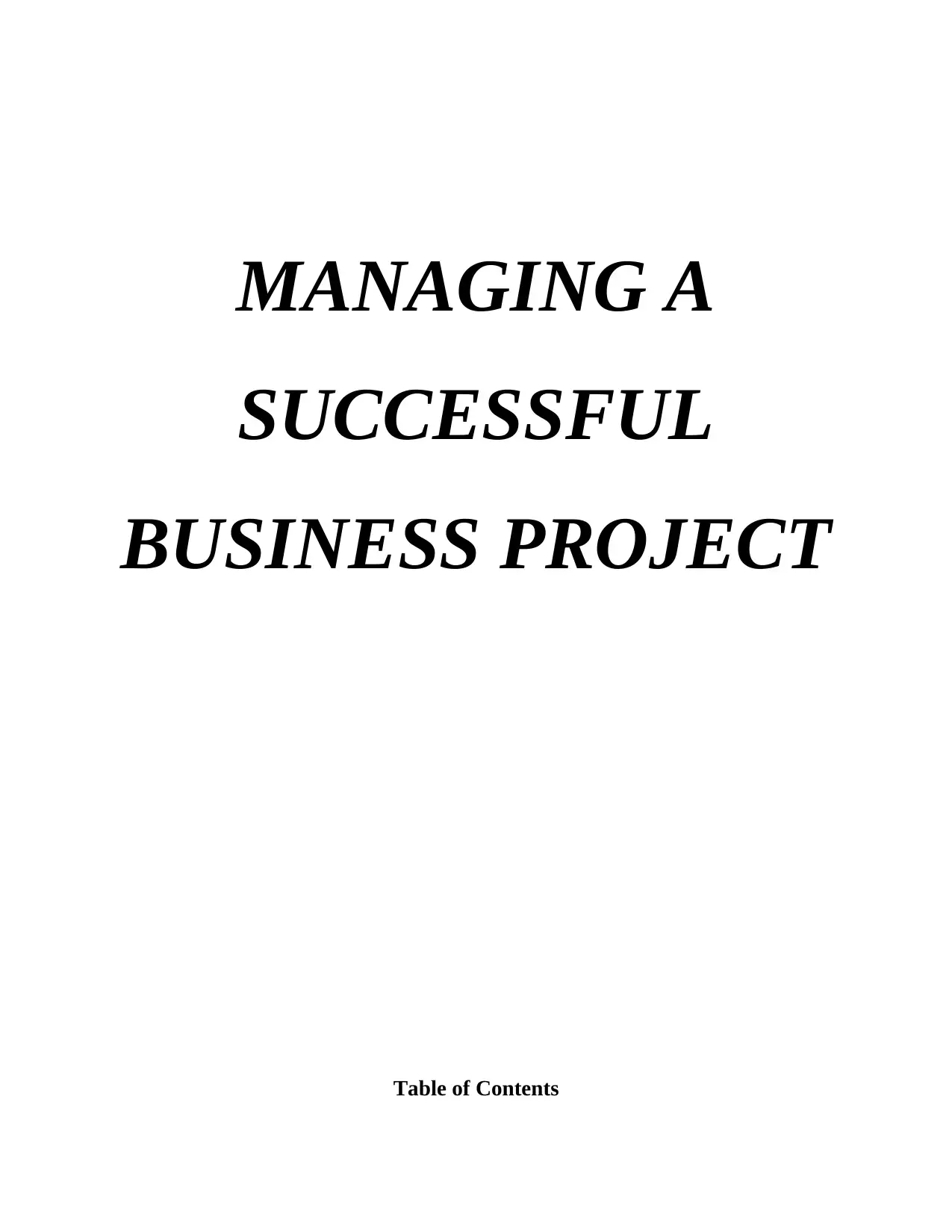
MANAGING A
SUCCESSFUL
BUSINESS PROJECT
Table of Contents
SUCCESSFUL
BUSINESS PROJECT
Table of Contents
Paraphrase This Document
Need a fresh take? Get an instant paraphrase of this document with our AI Paraphraser
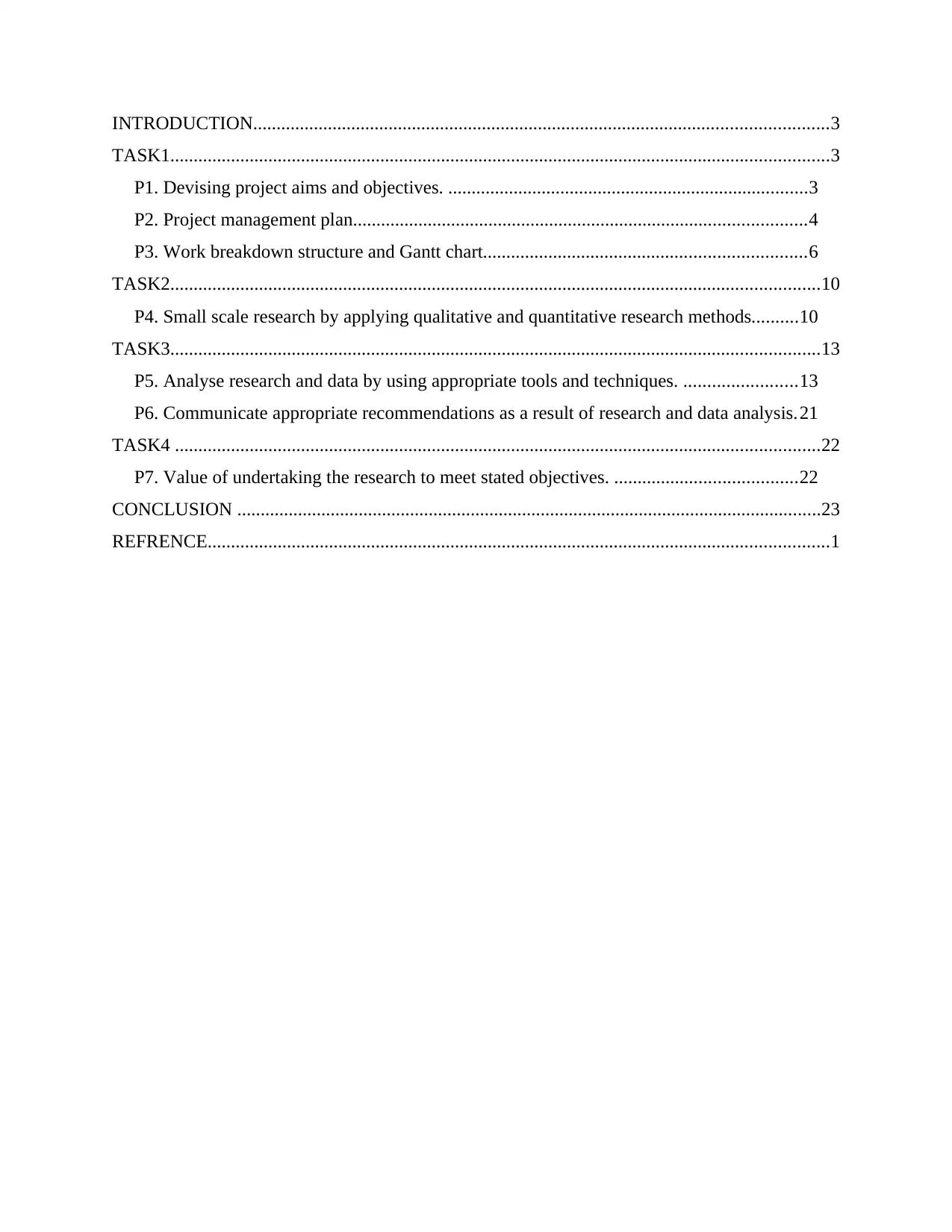
INTRODUCTION...........................................................................................................................3
TASK1.............................................................................................................................................3
P1. Devising project aims and objectives. .............................................................................3
P2. Project management plan.................................................................................................4
P3. Work breakdown structure and Gantt chart.....................................................................6
TASK2...........................................................................................................................................10
P4. Small scale research by applying qualitative and quantitative research methods..........10
TASK3...........................................................................................................................................13
P5. Analyse research and data by using appropriate tools and techniques. ........................13
P6. Communicate appropriate recommendations as a result of research and data analysis.21
TASK4 ..........................................................................................................................................22
P7. Value of undertaking the research to meet stated objectives. .......................................22
CONCLUSION .............................................................................................................................23
REFRENCE.....................................................................................................................................1
TASK1.............................................................................................................................................3
P1. Devising project aims and objectives. .............................................................................3
P2. Project management plan.................................................................................................4
P3. Work breakdown structure and Gantt chart.....................................................................6
TASK2...........................................................................................................................................10
P4. Small scale research by applying qualitative and quantitative research methods..........10
TASK3...........................................................................................................................................13
P5. Analyse research and data by using appropriate tools and techniques. ........................13
P6. Communicate appropriate recommendations as a result of research and data analysis.21
TASK4 ..........................................................................................................................................22
P7. Value of undertaking the research to meet stated objectives. .......................................22
CONCLUSION .............................................................................................................................23
REFRENCE.....................................................................................................................................1

⊘ This is a preview!⊘
Do you want full access?
Subscribe today to unlock all pages.

Trusted by 1+ million students worldwide
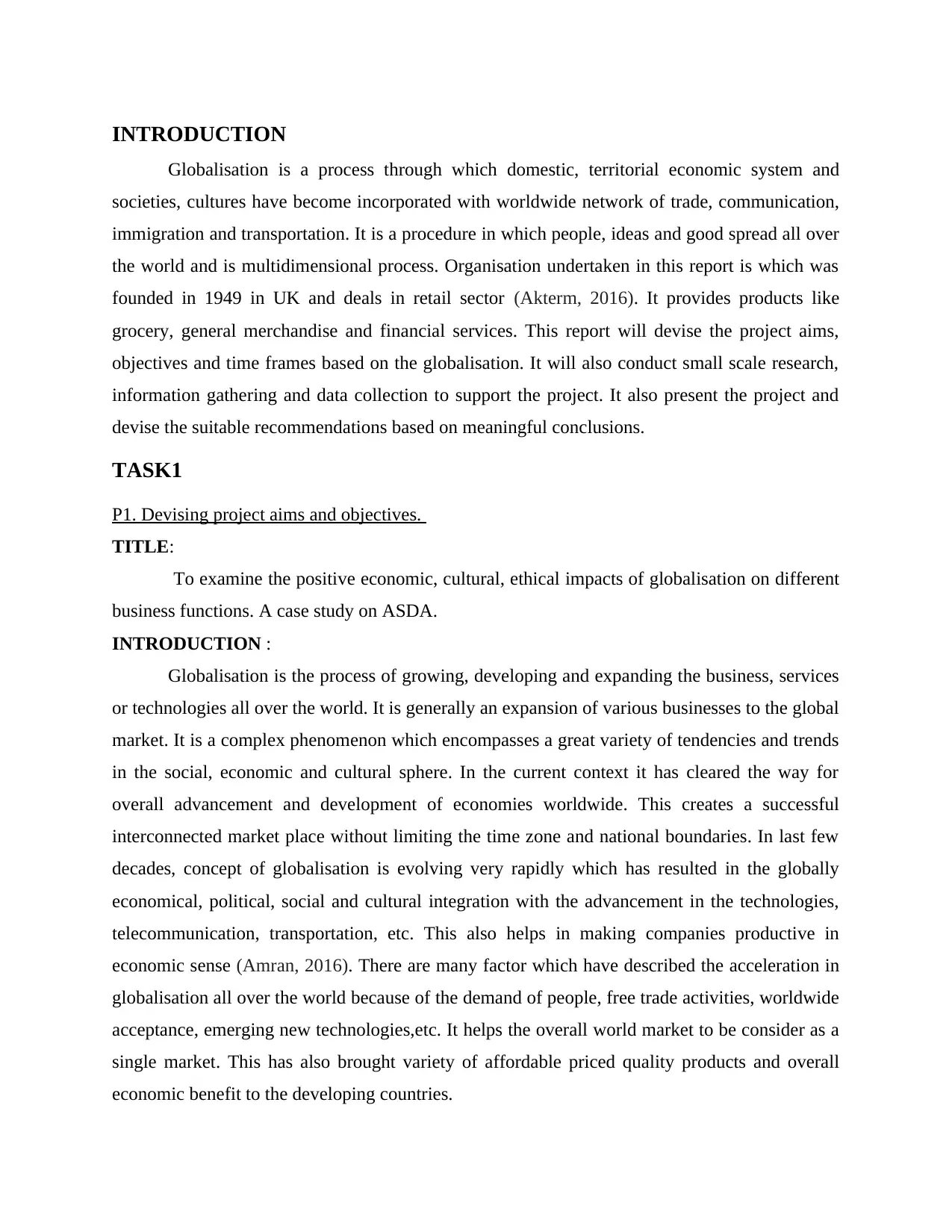
INTRODUCTION
Globalisation is a process through which domestic, territorial economic system and
societies, cultures have become incorporated with worldwide network of trade, communication,
immigration and transportation. It is a procedure in which people, ideas and good spread all over
the world and is multidimensional process. Organisation undertaken in this report is which was
founded in 1949 in UK and deals in retail sector (Akterm, 2016). It provides products like
grocery, general merchandise and financial services. This report will devise the project aims,
objectives and time frames based on the globalisation. It will also conduct small scale research,
information gathering and data collection to support the project. It also present the project and
devise the suitable recommendations based on meaningful conclusions.
TASK1
P1. Devising project aims and objectives.
TITLE:
To examine the positive economic, cultural, ethical impacts of globalisation on different
business functions. A case study on ASDA.
INTRODUCTION :
Globalisation is the process of growing, developing and expanding the business, services
or technologies all over the world. It is generally an expansion of various businesses to the global
market. It is a complex phenomenon which encompasses a great variety of tendencies and trends
in the social, economic and cultural sphere. In the current context it has cleared the way for
overall advancement and development of economies worldwide. This creates a successful
interconnected market place without limiting the time zone and national boundaries. In last few
decades, concept of globalisation is evolving very rapidly which has resulted in the globally
economical, political, social and cultural integration with the advancement in the technologies,
telecommunication, transportation, etc. This also helps in making companies productive in
economic sense (Amran, 2016). There are many factor which have described the acceleration in
globalisation all over the world because of the demand of people, free trade activities, worldwide
acceptance, emerging new technologies,etc. It helps the overall world market to be consider as a
single market. This has also brought variety of affordable priced quality products and overall
economic benefit to the developing countries.
Globalisation is a process through which domestic, territorial economic system and
societies, cultures have become incorporated with worldwide network of trade, communication,
immigration and transportation. It is a procedure in which people, ideas and good spread all over
the world and is multidimensional process. Organisation undertaken in this report is which was
founded in 1949 in UK and deals in retail sector (Akterm, 2016). It provides products like
grocery, general merchandise and financial services. This report will devise the project aims,
objectives and time frames based on the globalisation. It will also conduct small scale research,
information gathering and data collection to support the project. It also present the project and
devise the suitable recommendations based on meaningful conclusions.
TASK1
P1. Devising project aims and objectives.
TITLE:
To examine the positive economic, cultural, ethical impacts of globalisation on different
business functions. A case study on ASDA.
INTRODUCTION :
Globalisation is the process of growing, developing and expanding the business, services
or technologies all over the world. It is generally an expansion of various businesses to the global
market. It is a complex phenomenon which encompasses a great variety of tendencies and trends
in the social, economic and cultural sphere. In the current context it has cleared the way for
overall advancement and development of economies worldwide. This creates a successful
interconnected market place without limiting the time zone and national boundaries. In last few
decades, concept of globalisation is evolving very rapidly which has resulted in the globally
economical, political, social and cultural integration with the advancement in the technologies,
telecommunication, transportation, etc. This also helps in making companies productive in
economic sense (Amran, 2016). There are many factor which have described the acceleration in
globalisation all over the world because of the demand of people, free trade activities, worldwide
acceptance, emerging new technologies,etc. It helps the overall world market to be consider as a
single market. This has also brought variety of affordable priced quality products and overall
economic benefit to the developing countries.
Paraphrase This Document
Need a fresh take? Get an instant paraphrase of this document with our AI Paraphraser
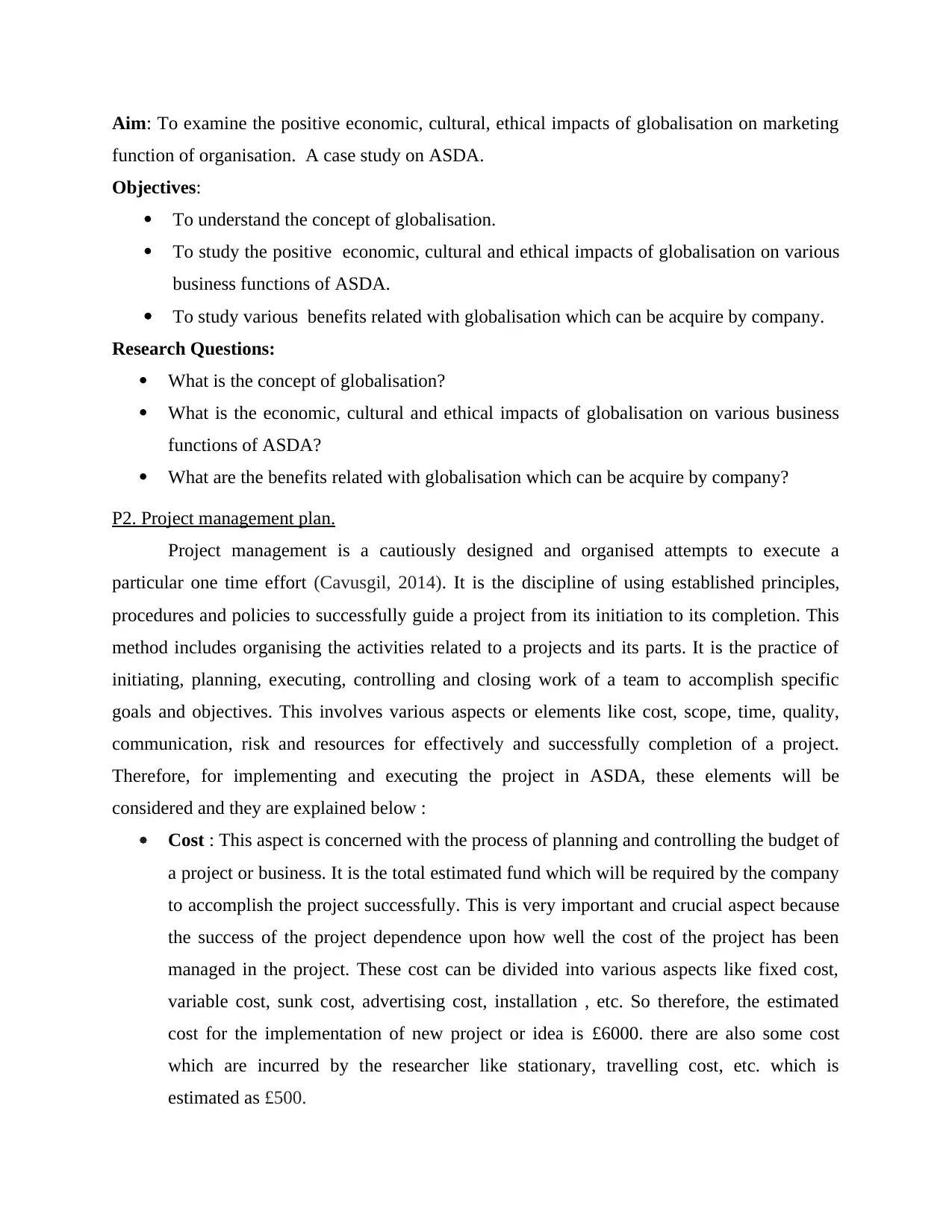
Aim: To examine the positive economic, cultural, ethical impacts of globalisation on marketing
function of organisation. A case study on ASDA.
Objectives:
To understand the concept of globalisation.
To study the positive economic, cultural and ethical impacts of globalisation on various
business functions of ASDA.
To study various benefits related with globalisation which can be acquire by company.
Research Questions:
What is the concept of globalisation?
What is the economic, cultural and ethical impacts of globalisation on various business
functions of ASDA?
What are the benefits related with globalisation which can be acquire by company?
P2. Project management plan.
Project management is a cautiously designed and organised attempts to execute a
particular one time effort (Cavusgil, 2014). It is the discipline of using established principles,
procedures and policies to successfully guide a project from its initiation to its completion. This
method includes organising the activities related to a projects and its parts. It is the practice of
initiating, planning, executing, controlling and closing work of a team to accomplish specific
goals and objectives. This involves various aspects or elements like cost, scope, time, quality,
communication, risk and resources for effectively and successfully completion of a project.
Therefore, for implementing and executing the project in ASDA, these elements will be
considered and they are explained below :
Cost : This aspect is concerned with the process of planning and controlling the budget of
a project or business. It is the total estimated fund which will be required by the company
to accomplish the project successfully. This is very important and crucial aspect because
the success of the project dependence upon how well the cost of the project has been
managed in the project. These cost can be divided into various aspects like fixed cost,
variable cost, sunk cost, advertising cost, installation , etc. So therefore, the estimated
cost for the implementation of new project or idea is £6000. there are also some cost
which are incurred by the researcher like stationary, travelling cost, etc. which is
estimated as £500.
function of organisation. A case study on ASDA.
Objectives:
To understand the concept of globalisation.
To study the positive economic, cultural and ethical impacts of globalisation on various
business functions of ASDA.
To study various benefits related with globalisation which can be acquire by company.
Research Questions:
What is the concept of globalisation?
What is the economic, cultural and ethical impacts of globalisation on various business
functions of ASDA?
What are the benefits related with globalisation which can be acquire by company?
P2. Project management plan.
Project management is a cautiously designed and organised attempts to execute a
particular one time effort (Cavusgil, 2014). It is the discipline of using established principles,
procedures and policies to successfully guide a project from its initiation to its completion. This
method includes organising the activities related to a projects and its parts. It is the practice of
initiating, planning, executing, controlling and closing work of a team to accomplish specific
goals and objectives. This involves various aspects or elements like cost, scope, time, quality,
communication, risk and resources for effectively and successfully completion of a project.
Therefore, for implementing and executing the project in ASDA, these elements will be
considered and they are explained below :
Cost : This aspect is concerned with the process of planning and controlling the budget of
a project or business. It is the total estimated fund which will be required by the company
to accomplish the project successfully. This is very important and crucial aspect because
the success of the project dependence upon how well the cost of the project has been
managed in the project. These cost can be divided into various aspects like fixed cost,
variable cost, sunk cost, advertising cost, installation , etc. So therefore, the estimated
cost for the implementation of new project or idea is £6000. there are also some cost
which are incurred by the researcher like stationary, travelling cost, etc. which is
estimated as £500.
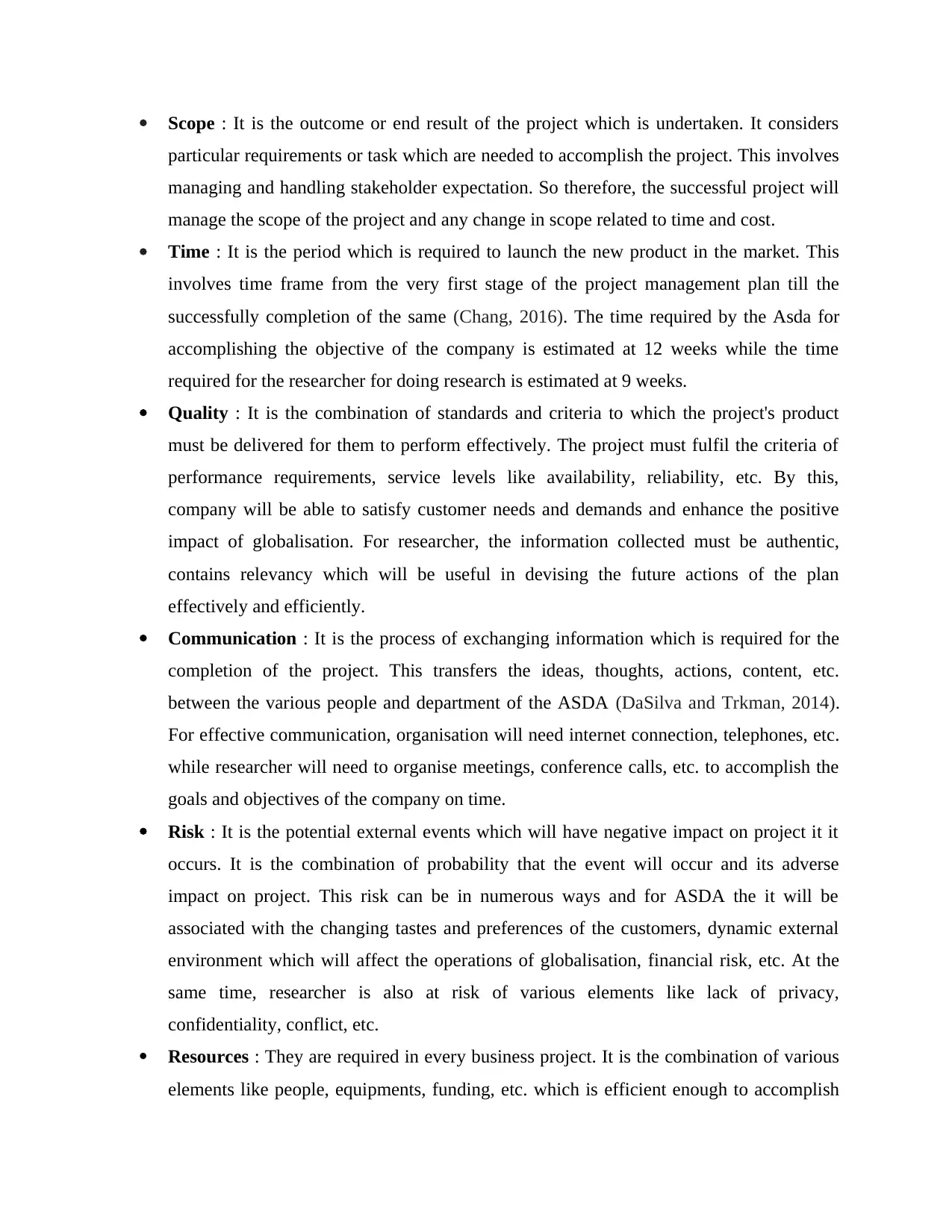
Scope : It is the outcome or end result of the project which is undertaken. It considers
particular requirements or task which are needed to accomplish the project. This involves
managing and handling stakeholder expectation. So therefore, the successful project will
manage the scope of the project and any change in scope related to time and cost.
Time : It is the period which is required to launch the new product in the market. This
involves time frame from the very first stage of the project management plan till the
successfully completion of the same (Chang, 2016). The time required by the Asda for
accomplishing the objective of the company is estimated at 12 weeks while the time
required for the researcher for doing research is estimated at 9 weeks.
Quality : It is the combination of standards and criteria to which the project's product
must be delivered for them to perform effectively. The project must fulfil the criteria of
performance requirements, service levels like availability, reliability, etc. By this,
company will be able to satisfy customer needs and demands and enhance the positive
impact of globalisation. For researcher, the information collected must be authentic,
contains relevancy which will be useful in devising the future actions of the plan
effectively and efficiently.
Communication : It is the process of exchanging information which is required for the
completion of the project. This transfers the ideas, thoughts, actions, content, etc.
between the various people and department of the ASDA (DaSilva and Trkman, 2014).
For effective communication, organisation will need internet connection, telephones, etc.
while researcher will need to organise meetings, conference calls, etc. to accomplish the
goals and objectives of the company on time.
Risk : It is the potential external events which will have negative impact on project it it
occurs. It is the combination of probability that the event will occur and its adverse
impact on project. This risk can be in numerous ways and for ASDA the it will be
associated with the changing tastes and preferences of the customers, dynamic external
environment which will affect the operations of globalisation, financial risk, etc. At the
same time, researcher is also at risk of various elements like lack of privacy,
confidentiality, conflict, etc.
Resources : They are required in every business project. It is the combination of various
elements like people, equipments, funding, etc. which is efficient enough to accomplish
particular requirements or task which are needed to accomplish the project. This involves
managing and handling stakeholder expectation. So therefore, the successful project will
manage the scope of the project and any change in scope related to time and cost.
Time : It is the period which is required to launch the new product in the market. This
involves time frame from the very first stage of the project management plan till the
successfully completion of the same (Chang, 2016). The time required by the Asda for
accomplishing the objective of the company is estimated at 12 weeks while the time
required for the researcher for doing research is estimated at 9 weeks.
Quality : It is the combination of standards and criteria to which the project's product
must be delivered for them to perform effectively. The project must fulfil the criteria of
performance requirements, service levels like availability, reliability, etc. By this,
company will be able to satisfy customer needs and demands and enhance the positive
impact of globalisation. For researcher, the information collected must be authentic,
contains relevancy which will be useful in devising the future actions of the plan
effectively and efficiently.
Communication : It is the process of exchanging information which is required for the
completion of the project. This transfers the ideas, thoughts, actions, content, etc.
between the various people and department of the ASDA (DaSilva and Trkman, 2014).
For effective communication, organisation will need internet connection, telephones, etc.
while researcher will need to organise meetings, conference calls, etc. to accomplish the
goals and objectives of the company on time.
Risk : It is the potential external events which will have negative impact on project it it
occurs. It is the combination of probability that the event will occur and its adverse
impact on project. This risk can be in numerous ways and for ASDA the it will be
associated with the changing tastes and preferences of the customers, dynamic external
environment which will affect the operations of globalisation, financial risk, etc. At the
same time, researcher is also at risk of various elements like lack of privacy,
confidentiality, conflict, etc.
Resources : They are required in every business project. It is the combination of various
elements like people, equipments, funding, etc. which is efficient enough to accomplish
⊘ This is a preview!⊘
Do you want full access?
Subscribe today to unlock all pages.

Trusted by 1+ million students worldwide
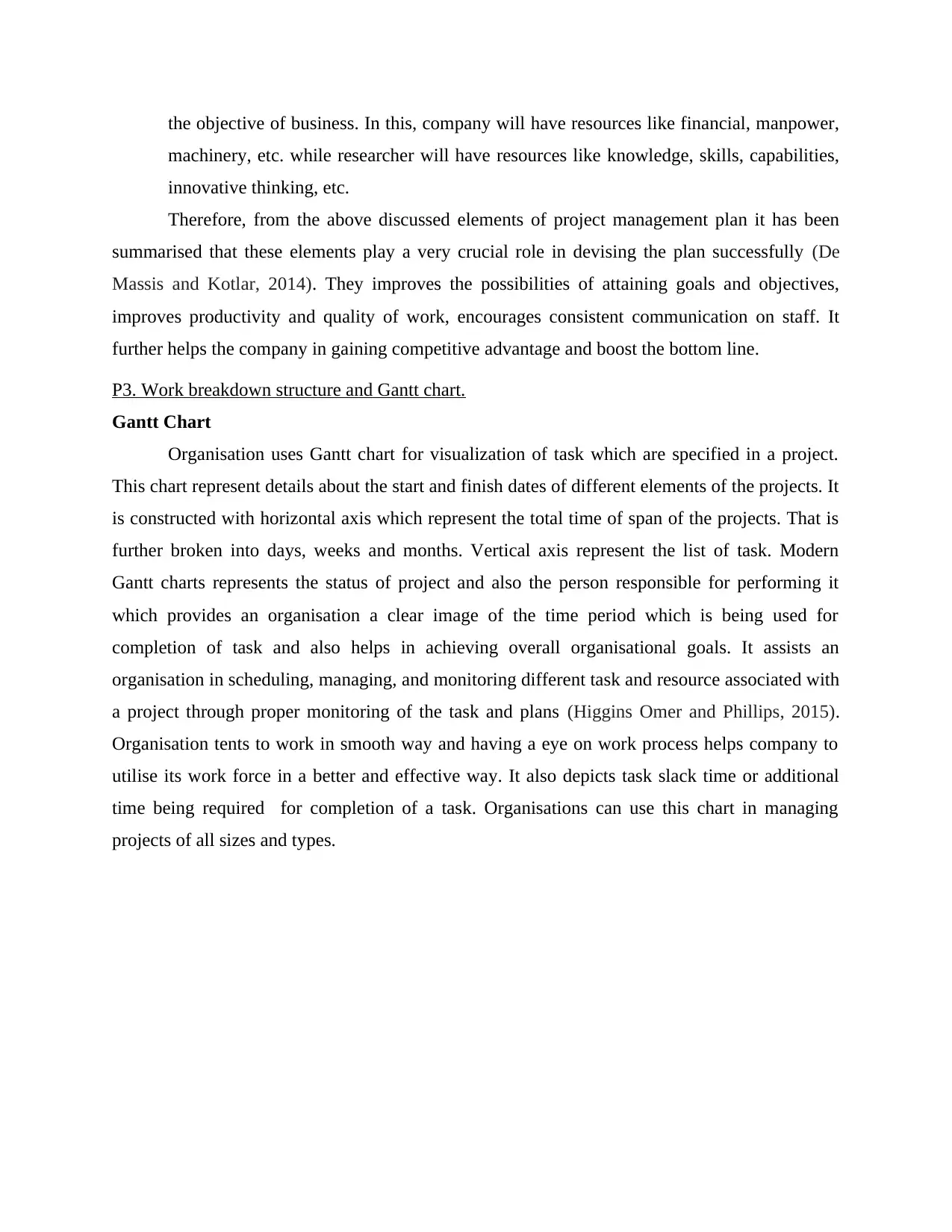
the objective of business. In this, company will have resources like financial, manpower,
machinery, etc. while researcher will have resources like knowledge, skills, capabilities,
innovative thinking, etc.
Therefore, from the above discussed elements of project management plan it has been
summarised that these elements play a very crucial role in devising the plan successfully (De
Massis and Kotlar, 2014). They improves the possibilities of attaining goals and objectives,
improves productivity and quality of work, encourages consistent communication on staff. It
further helps the company in gaining competitive advantage and boost the bottom line.
P3. Work breakdown structure and Gantt chart.
Gantt Chart
Organisation uses Gantt chart for visualization of task which are specified in a project.
This chart represent details about the start and finish dates of different elements of the projects. It
is constructed with horizontal axis which represent the total time of span of the projects. That is
further broken into days, weeks and months. Vertical axis represent the list of task. Modern
Gantt charts represents the status of project and also the person responsible for performing it
which provides an organisation a clear image of the time period which is being used for
completion of task and also helps in achieving overall organisational goals. It assists an
organisation in scheduling, managing, and monitoring different task and resource associated with
a project through proper monitoring of the task and plans (Higgins Omer and Phillips, 2015).
Organisation tents to work in smooth way and having a eye on work process helps company to
utilise its work force in a better and effective way. It also depicts task slack time or additional
time being required for completion of a task. Organisations can use this chart in managing
projects of all sizes and types.
machinery, etc. while researcher will have resources like knowledge, skills, capabilities,
innovative thinking, etc.
Therefore, from the above discussed elements of project management plan it has been
summarised that these elements play a very crucial role in devising the plan successfully (De
Massis and Kotlar, 2014). They improves the possibilities of attaining goals and objectives,
improves productivity and quality of work, encourages consistent communication on staff. It
further helps the company in gaining competitive advantage and boost the bottom line.
P3. Work breakdown structure and Gantt chart.
Gantt Chart
Organisation uses Gantt chart for visualization of task which are specified in a project.
This chart represent details about the start and finish dates of different elements of the projects. It
is constructed with horizontal axis which represent the total time of span of the projects. That is
further broken into days, weeks and months. Vertical axis represent the list of task. Modern
Gantt charts represents the status of project and also the person responsible for performing it
which provides an organisation a clear image of the time period which is being used for
completion of task and also helps in achieving overall organisational goals. It assists an
organisation in scheduling, managing, and monitoring different task and resource associated with
a project through proper monitoring of the task and plans (Higgins Omer and Phillips, 2015).
Organisation tents to work in smooth way and having a eye on work process helps company to
utilise its work force in a better and effective way. It also depicts task slack time or additional
time being required for completion of a task. Organisations can use this chart in managing
projects of all sizes and types.
Paraphrase This Document
Need a fresh take? Get an instant paraphrase of this document with our AI Paraphraser
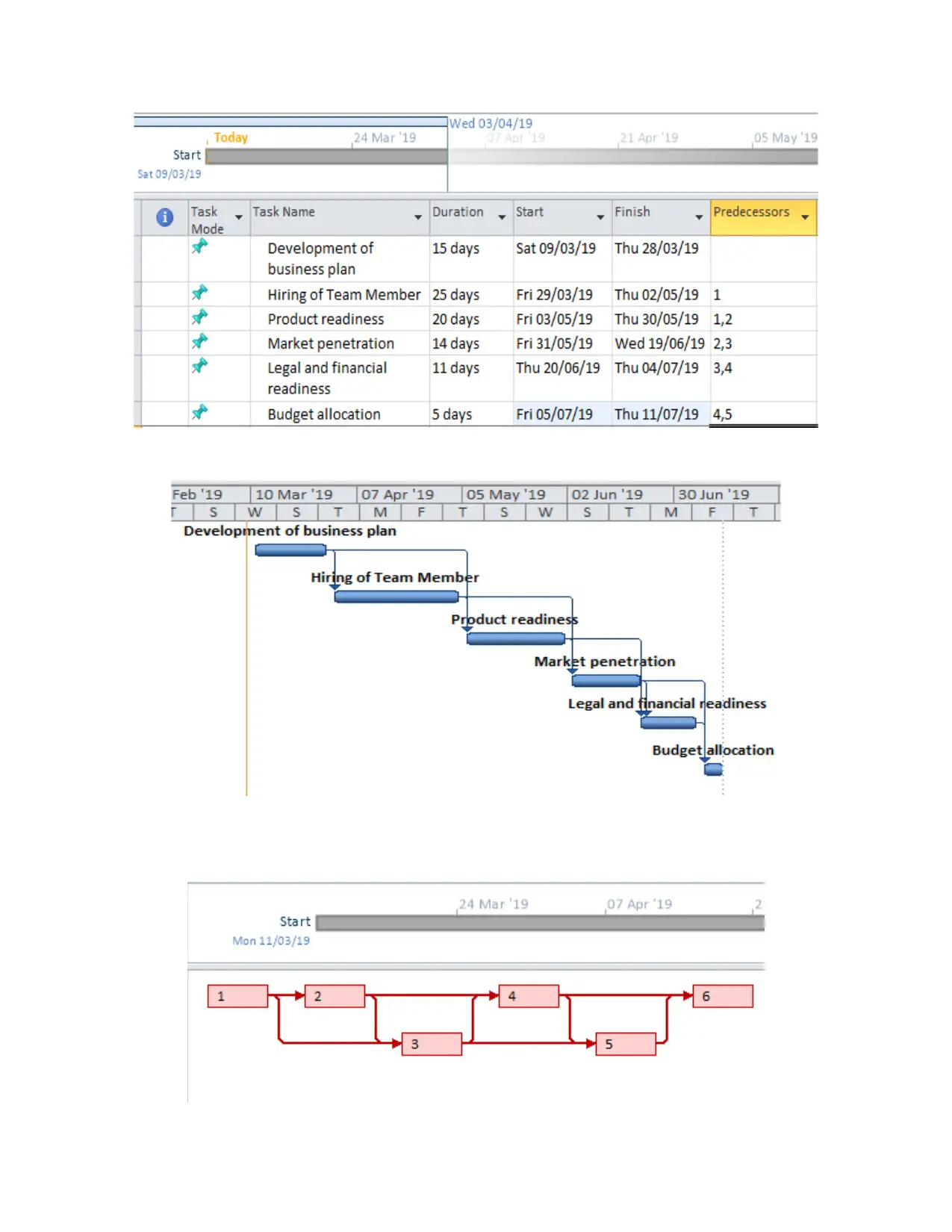
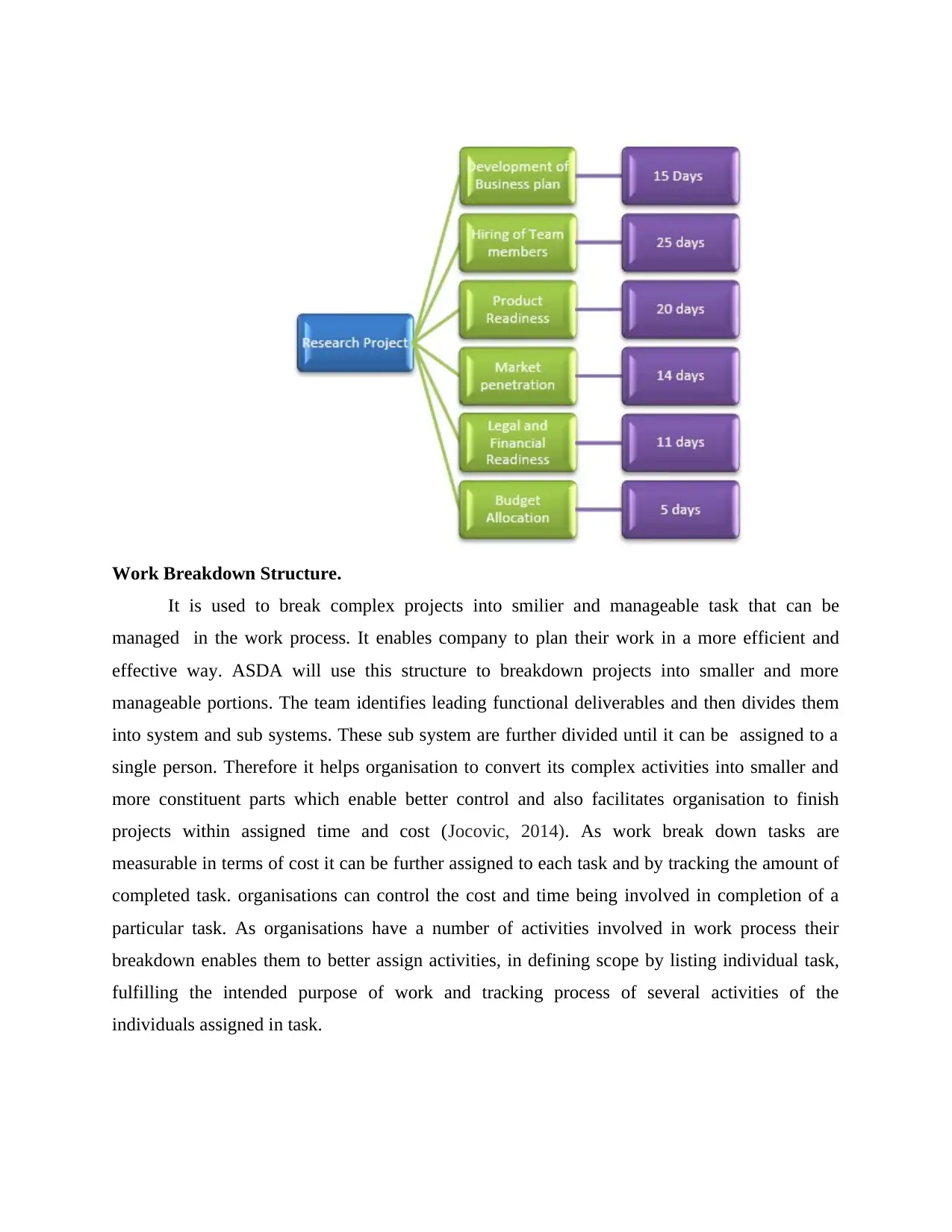
Work Breakdown Structure.
It is used to break complex projects into smilier and manageable task that can be
managed in the work process. It enables company to plan their work in a more efficient and
effective way. ASDA will use this structure to breakdown projects into smaller and more
manageable portions. The team identifies leading functional deliverables and then divides them
into system and sub systems. These sub system are further divided until it can be assigned to a
single person. Therefore it helps organisation to convert its complex activities into smaller and
more constituent parts which enable better control and also facilitates organisation to finish
projects within assigned time and cost (Jocovic, 2014). As work break down tasks are
measurable in terms of cost it can be further assigned to each task and by tracking the amount of
completed task. organisations can control the cost and time being involved in completion of a
particular task. As organisations have a number of activities involved in work process their
breakdown enables them to better assign activities, in defining scope by listing individual task,
fulfilling the intended purpose of work and tracking process of several activities of the
individuals assigned in task.
It is used to break complex projects into smilier and manageable task that can be
managed in the work process. It enables company to plan their work in a more efficient and
effective way. ASDA will use this structure to breakdown projects into smaller and more
manageable portions. The team identifies leading functional deliverables and then divides them
into system and sub systems. These sub system are further divided until it can be assigned to a
single person. Therefore it helps organisation to convert its complex activities into smaller and
more constituent parts which enable better control and also facilitates organisation to finish
projects within assigned time and cost (Jocovic, 2014). As work break down tasks are
measurable in terms of cost it can be further assigned to each task and by tracking the amount of
completed task. organisations can control the cost and time being involved in completion of a
particular task. As organisations have a number of activities involved in work process their
breakdown enables them to better assign activities, in defining scope by listing individual task,
fulfilling the intended purpose of work and tracking process of several activities of the
individuals assigned in task.
⊘ This is a preview!⊘
Do you want full access?
Subscribe today to unlock all pages.

Trusted by 1+ million students worldwide
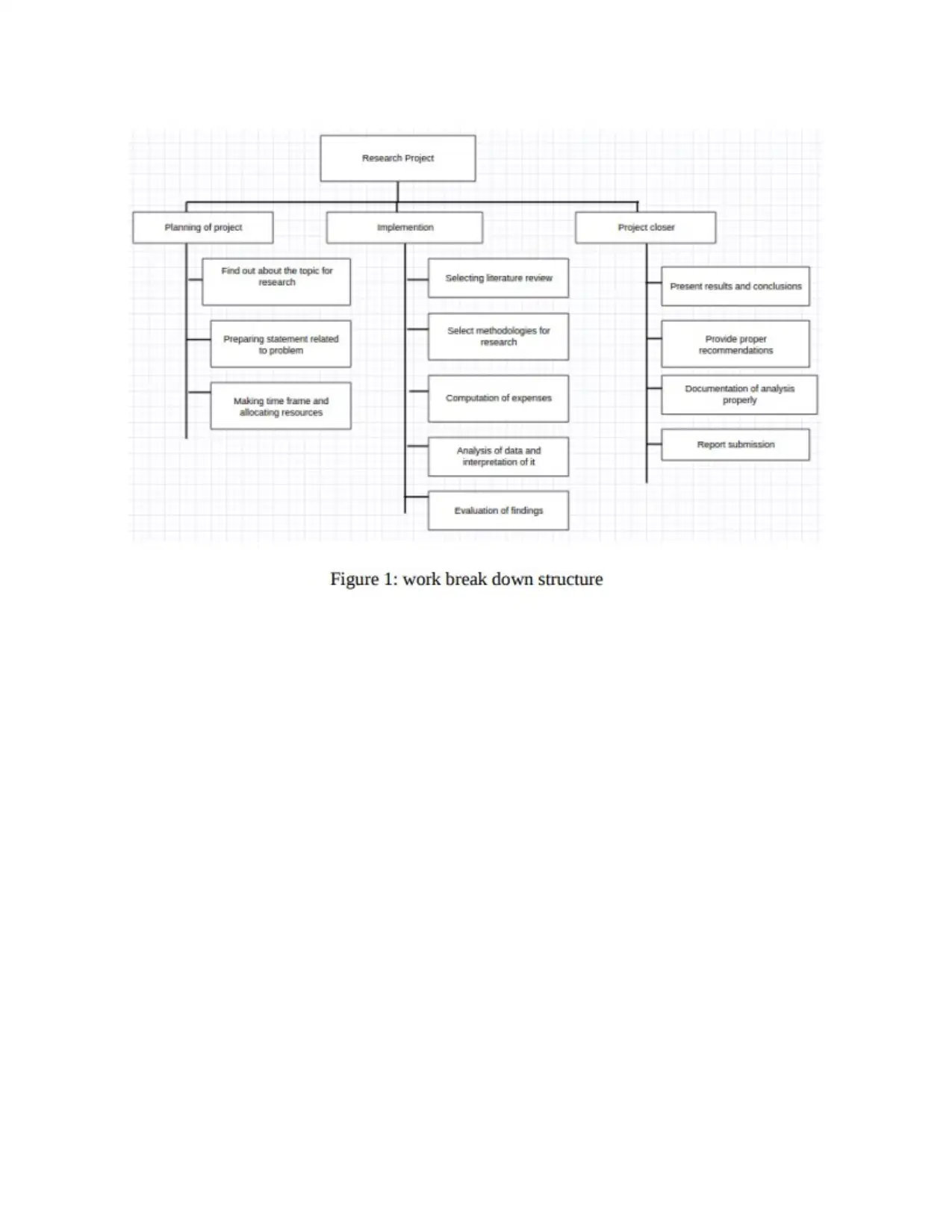
Paraphrase This Document
Need a fresh take? Get an instant paraphrase of this document with our AI Paraphraser
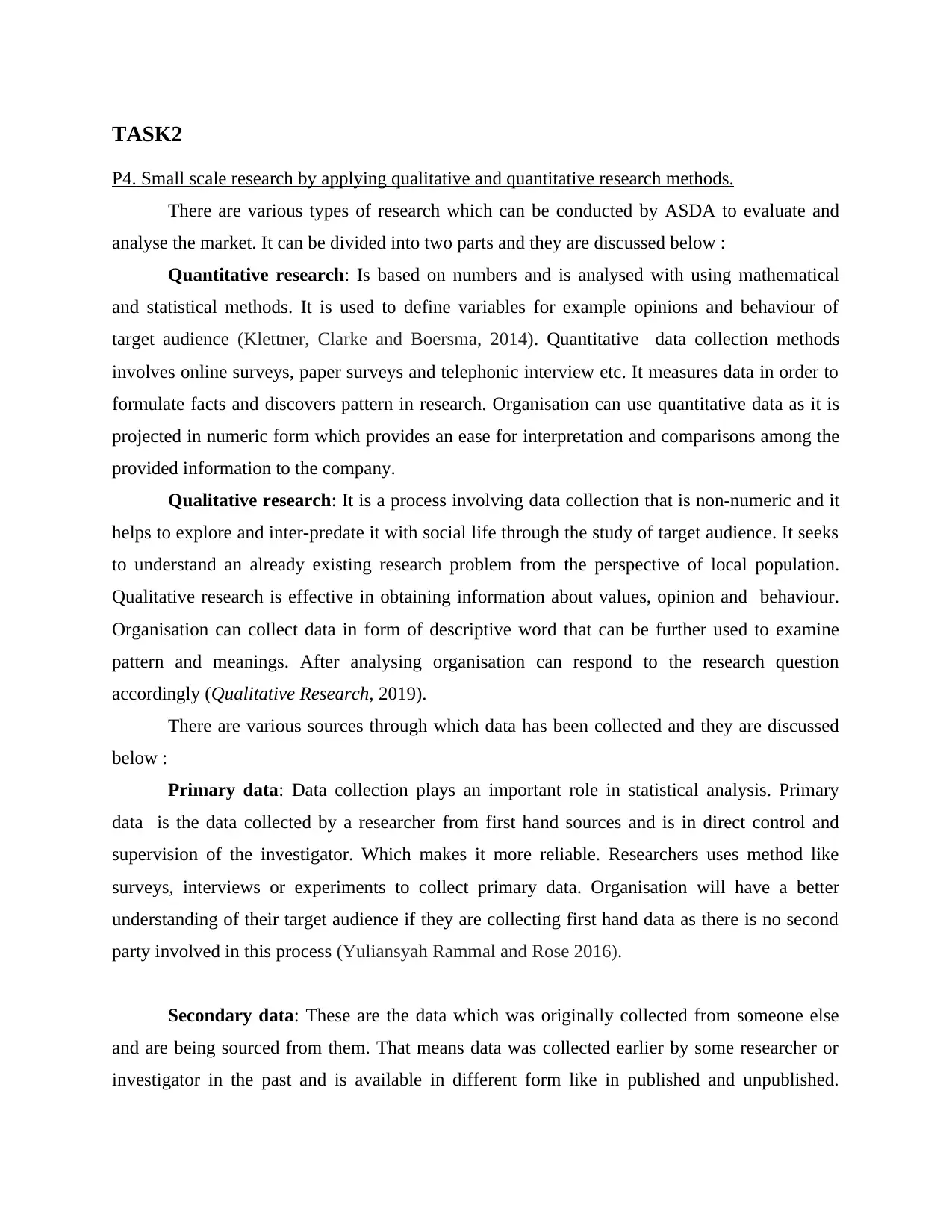
TASK2
P4. Small scale research by applying qualitative and quantitative research methods.
There are various types of research which can be conducted by ASDA to evaluate and
analyse the market. It can be divided into two parts and they are discussed below :
Quantitative research: Is based on numbers and is analysed with using mathematical
and statistical methods. It is used to define variables for example opinions and behaviour of
target audience (Klettner, Clarke and Boersma, 2014). Quantitative data collection methods
involves online surveys, paper surveys and telephonic interview etc. It measures data in order to
formulate facts and discovers pattern in research. Organisation can use quantitative data as it is
projected in numeric form which provides an ease for interpretation and comparisons among the
provided information to the company.
Qualitative research: It is a process involving data collection that is non-numeric and it
helps to explore and inter-predate it with social life through the study of target audience. It seeks
to understand an already existing research problem from the perspective of local population.
Qualitative research is effective in obtaining information about values, opinion and behaviour.
Organisation can collect data in form of descriptive word that can be further used to examine
pattern and meanings. After analysing organisation can respond to the research question
accordingly (Qualitative Research, 2019).
There are various sources through which data has been collected and they are discussed
below :
Primary data: Data collection plays an important role in statistical analysis. Primary
data is the data collected by a researcher from first hand sources and is in direct control and
supervision of the investigator. Which makes it more reliable. Researchers uses method like
surveys, interviews or experiments to collect primary data. Organisation will have a better
understanding of their target audience if they are collecting first hand data as there is no second
party involved in this process (Yuliansyah Rammal and Rose 2016).
Secondary data: These are the data which was originally collected from someone else
and are being sourced from them. That means data was collected earlier by some researcher or
investigator in the past and is available in different form like in published and unpublished.
P4. Small scale research by applying qualitative and quantitative research methods.
There are various types of research which can be conducted by ASDA to evaluate and
analyse the market. It can be divided into two parts and they are discussed below :
Quantitative research: Is based on numbers and is analysed with using mathematical
and statistical methods. It is used to define variables for example opinions and behaviour of
target audience (Klettner, Clarke and Boersma, 2014). Quantitative data collection methods
involves online surveys, paper surveys and telephonic interview etc. It measures data in order to
formulate facts and discovers pattern in research. Organisation can use quantitative data as it is
projected in numeric form which provides an ease for interpretation and comparisons among the
provided information to the company.
Qualitative research: It is a process involving data collection that is non-numeric and it
helps to explore and inter-predate it with social life through the study of target audience. It seeks
to understand an already existing research problem from the perspective of local population.
Qualitative research is effective in obtaining information about values, opinion and behaviour.
Organisation can collect data in form of descriptive word that can be further used to examine
pattern and meanings. After analysing organisation can respond to the research question
accordingly (Qualitative Research, 2019).
There are various sources through which data has been collected and they are discussed
below :
Primary data: Data collection plays an important role in statistical analysis. Primary
data is the data collected by a researcher from first hand sources and is in direct control and
supervision of the investigator. Which makes it more reliable. Researchers uses method like
surveys, interviews or experiments to collect primary data. Organisation will have a better
understanding of their target audience if they are collecting first hand data as there is no second
party involved in this process (Yuliansyah Rammal and Rose 2016).
Secondary data: These are the data which was originally collected from someone else
and are being sourced from them. That means data was collected earlier by some researcher or
investigator in the past and is available in different form like in published and unpublished.
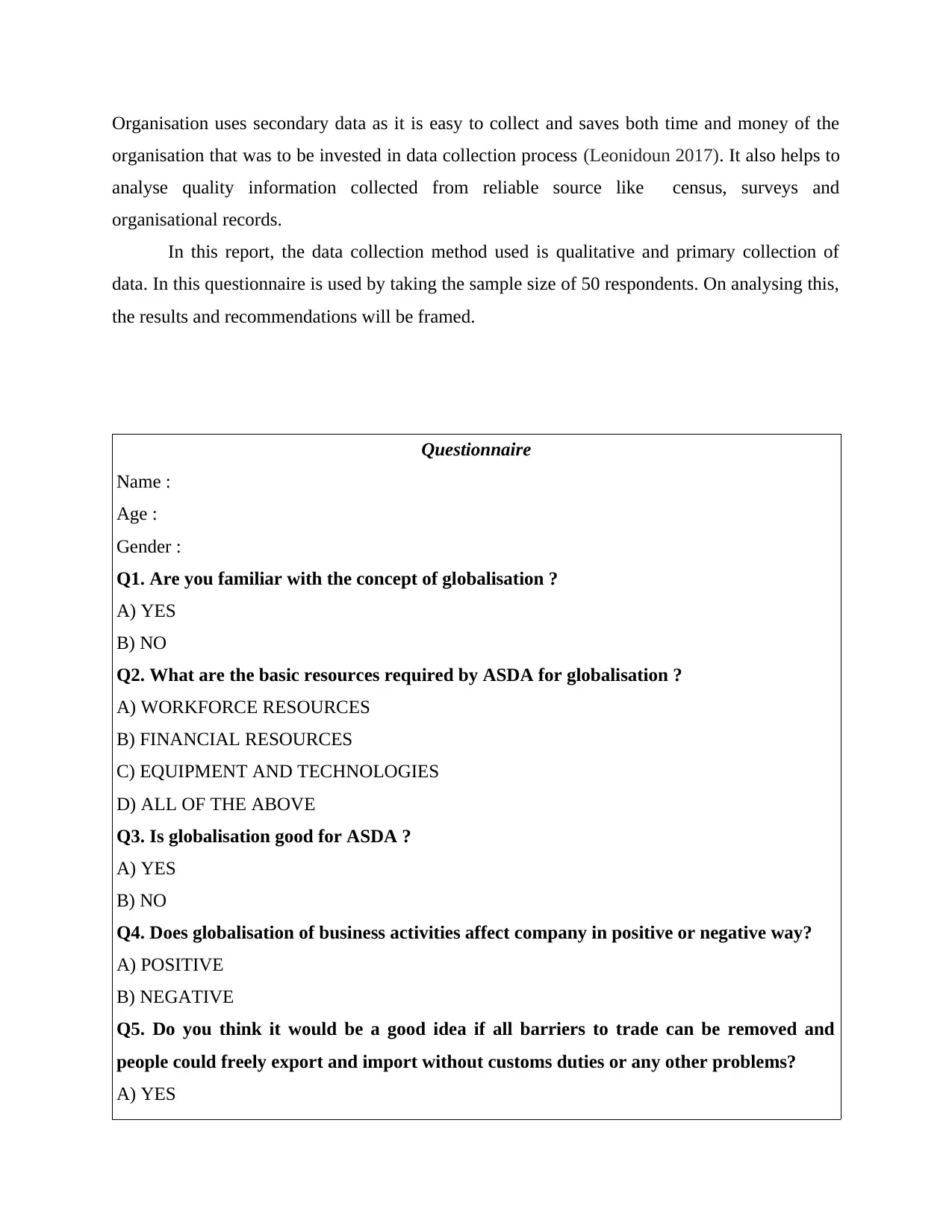
Organisation uses secondary data as it is easy to collect and saves both time and money of the
organisation that was to be invested in data collection process (Leonidoun 2017). It also helps to
analyse quality information collected from reliable source like census, surveys and
organisational records.
In this report, the data collection method used is qualitative and primary collection of
data. In this questionnaire is used by taking the sample size of 50 respondents. On analysing this,
the results and recommendations will be framed.
Questionnaire
Name :
Age :
Gender :
Q1. Are you familiar with the concept of globalisation ?
A) YES
B) NO
Q2. What are the basic resources required by ASDA for globalisation ?
A) WORKFORCE RESOURCES
B) FINANCIAL RESOURCES
C) EQUIPMENT AND TECHNOLOGIES
D) ALL OF THE ABOVE
Q3. Is globalisation good for ASDA ?
A) YES
B) NO
Q4. Does globalisation of business activities affect company in positive or negative way?
A) POSITIVE
B) NEGATIVE
Q5. Do you think it would be a good idea if all barriers to trade can be removed and
people could freely export and import without customs duties or any other problems?
A) YES
organisation that was to be invested in data collection process (Leonidoun 2017). It also helps to
analyse quality information collected from reliable source like census, surveys and
organisational records.
In this report, the data collection method used is qualitative and primary collection of
data. In this questionnaire is used by taking the sample size of 50 respondents. On analysing this,
the results and recommendations will be framed.
Questionnaire
Name :
Age :
Gender :
Q1. Are you familiar with the concept of globalisation ?
A) YES
B) NO
Q2. What are the basic resources required by ASDA for globalisation ?
A) WORKFORCE RESOURCES
B) FINANCIAL RESOURCES
C) EQUIPMENT AND TECHNOLOGIES
D) ALL OF THE ABOVE
Q3. Is globalisation good for ASDA ?
A) YES
B) NO
Q4. Does globalisation of business activities affect company in positive or negative way?
A) POSITIVE
B) NEGATIVE
Q5. Do you think it would be a good idea if all barriers to trade can be removed and
people could freely export and import without customs duties or any other problems?
A) YES
⊘ This is a preview!⊘
Do you want full access?
Subscribe today to unlock all pages.

Trusted by 1+ million students worldwide
1 out of 26
Related Documents
Your All-in-One AI-Powered Toolkit for Academic Success.
+13062052269
info@desklib.com
Available 24*7 on WhatsApp / Email
![[object Object]](/_next/static/media/star-bottom.7253800d.svg)
Unlock your academic potential
Copyright © 2020–2025 A2Z Services. All Rights Reserved. Developed and managed by ZUCOL.





